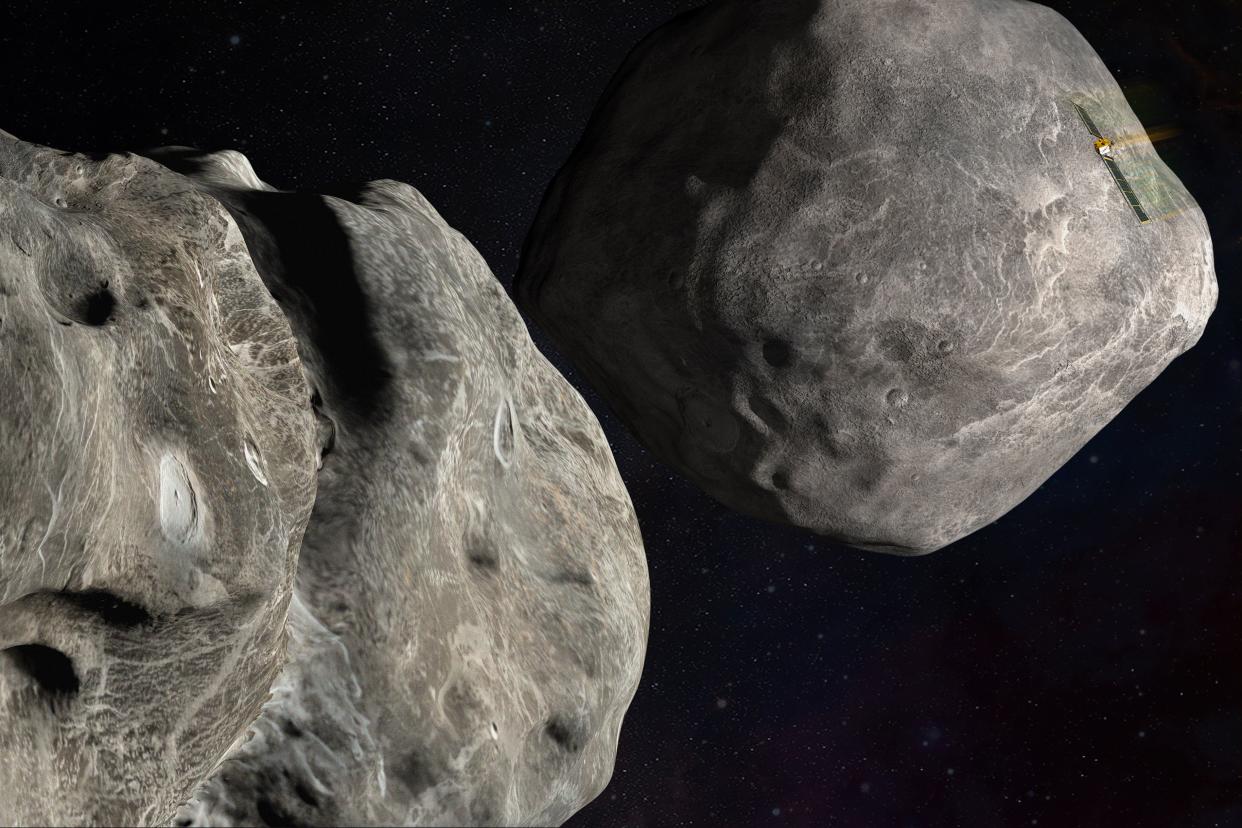NASA braces for spacecraft’s asteroid collision Monday in first-ever planetary defense test
NASA is ready to go boldly where no spacecraft has gone before.
The U.S. agency remains on track to smash its Dart spaceship into a small asteroid Monday night in a planetary defense test costing $325 million to pull off.
The collision is expected to happen at 7:14 p.m. Eastern Time, with the Dart striking a 525-foot asteroid named Dimorphos at 14,000 mph.
Earth isn’t at risk of being struck by Dimorphos, but the test is designed to provide NASA with information for how to handle future situations in the event an asteroid crash does need to be prevented.
“This is why we test,” NASA program executive Andrea Riley told The Associated Press. “We want to do it now rather than when there’s an actual need.”
Dart launched into space last November. Its collision with Dimorphos will take place about 7 million miles from Earth.

An illustration depicting NASA's DART probe, upper right, on course to impact the asteroid Dimorphos, left. (Steve Gribben/)
“This really is about asteroid deflection, not disruption,” planetary scientist Nancy Chabot, whose Johns Hopkins University’s Applied Physics Laboratory is handling the mission, told the AP. “This isn’t going to blow up the asteroid. It isn’t going to put it into lots of pieces.”
Dimorphos orbits around a 2,500-foot asteroid, Didymos, every 11 hours and 55 minutes. The collision is expected to reduce the length of time by 10 minutes.
In a real emergency situation, NASA would likely need its spacecraft to strike a threatening asteroid at least five years in advance of it reaching Earth — and potentially more than a decade earlier than that, Chabot said.
“This is stuff of science-fiction books and really corny episodes of ‘StarTrek’ from when I was a kid, and now it’s real,” said NASA program scientist Tom Statler, according to the AP.
Scientists initially discovered the larger Didymos in 1996, and believe its rapid rotations ultimately caused an asteroid moonlet to break off, creating Dimorphos.
Like the smaller structure, Didymos is considered no risk to hit Earth. Scientists feel confident that there isn’t asteroid on track to threaten Earth for at least the next century.
“These threats are real, and what makes this time special, is we can do something about it,” NASA’s science mission chief Thomas Zurbuchen said.
With News Wire Services
